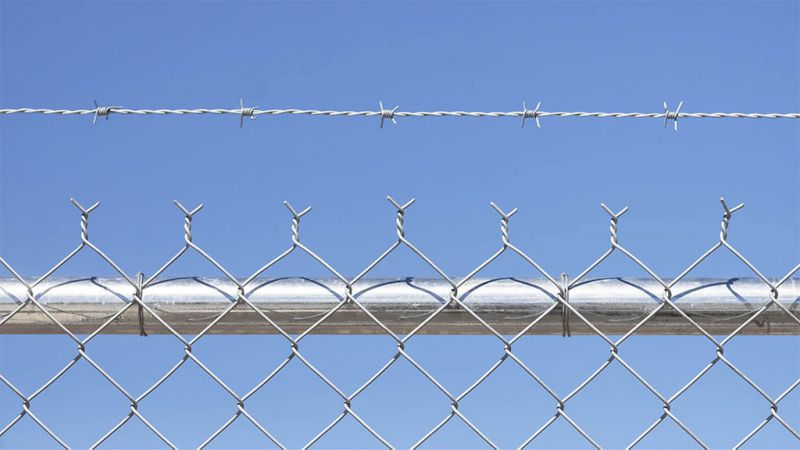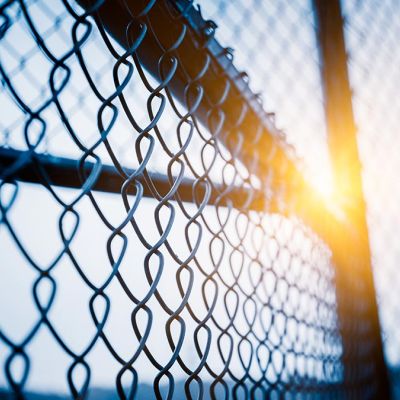WANT A GREAT DEAL?
Add products & we'll be in touch soon!


A Beginner’s Guide to Building and Maintaining a Fence
This guide aims to assist you in constructing a fence for your property, beginning with identifying your fencing goals. It will guide you through every step of the building process, from post setting to gate installation. Additionally, it includes maintenance tips to ensure your fence remains in excellent condition for years.
Planning Your Fence
Effective fence building starts with detailed planning, a step that saves time and expenses.
- First, define your fence's purpose—whether it's for security, livestock, or privacy—as this influences your choice of materials and design.
- Measure your fence line accurately for material estimates and consider googling "fence warehouse and supply near me" to get an idea of estimate pricing and supply options.
- Consult a fencing expert or local supplier for advice on the best type of fence for your requirements, considering local regulations and your budget. Discuss key components (end assemblies, posts, droppers, gates, wire types) and their proper spacing for a durable, functional fence.
- Drafting a sketch can provide a clear visual and ensure all materials, considering rural fencing supplies prices, are accounted for before construction begins.
- Lastly, prioritise safety by wearing appropriate protective gear during the building process. Looking up "tool supply near me" to know where you can buy some.
General Steps in Building Your Fence
This guide breaks down the fence building process into simple steps for beginners like you. Whether you're a homeowner looking for privacy or a farmer in need of a strong barrier, this guide gives you the knowledge and confidence to tackle the project independently.
Clear the Fence Line
Before starting your fence construction, it's crucial to prepare the area thoroughly for a hassle-free building process.
- Start by clearing any shrubs, bushes, or large stones that might block construction, using tools like loppers for small areas and a grinder or chainsaw for larger ones.
- Ensure a 2-meter clearance around the fence area for accessibility and alignment, obtaining necessary permissions for clearing non-owned land.
- Opt for durable fence posts made of treated pine or steel, available at local supply shops, avoiding unreliable nearby trees for support. Choose materials like treated pine or steel, which you can find at local fencing supplies shops or tool shops in Perth, known for their durability and strength.
Mark the Fence Line
To achieve a straight fence, especially over long distances, use the "sighting" technique with pickets as markers at the start and end points.
- One person positions themselves at the beginning, while another adjusts a picket in the middle until it aligns with an invisible line imagined by the first person, connecting the start and end markers.
- Repeat this process along the fence line, ensuring all markers are perfectly aligned. For enhanced precision, using a level on the pickets during sighting is recommended. Additionally, consider sourcing your materials from "fencing supplies near me" to ensure you have all the necessary equipment for accuracy.
Tip: Prioritise safety by contacting Dial Before You Dig service before excavating fence post holes to avoid hitting underground utilities, preventing potential harm and expenses.
Install Fence Posts
After preparing your fence line, it's crucial to properly install the fence posts for a solid foundation.
- Begin by marking the positions for each post hole with bright paint or pickets for precise placement.
- Choose the appropriate method for digging your post holes: manual tools like a crowbar and shovel for small projects, or power tools such as an auger for larger or harder terrain, available from trade fence supplies shops. The hole size should be slightly wider than the post for stability, with the depth adjusted according to fence height for adequate support.
- Position the post in the hole, backfill with soil, and pack tightly to eliminate air gaps.
- Create a small mound around the post base to prevent water accumulation and use a level to ensure each post is vertically straight, ensuring your fence's longevity and appearance.
Add Strainer Assemblies, Line Posts, and Droppers
After setting your fence posts, it's time to strengthen your fence structure with strainer assemblies, line posts, and droppers:
- Strainer Assemblies: Acting as your fence's anchors, these are crucial for absorbing the tension from the fence wires, ensuring they remain taut, and the fence stands straight. Consisting of steel posts and stays for extra support, strainer assemblies prevent the fence from leaning under pressure. They're buried deeper (around 1 meter) for enhanced stability. These assemblies can be bought pre-made from a fence warehouse and supply near you or DIY'ed for those who prefer a hands-on approach.
- End Assemblies: Special strainer assemblies used at fence endpoints, gateways, corners, and terrain changes to provide additional support and prevent sagging or leaning. At corners or where terrain changes, each fence line might need its own assembly to accommodate the different directions of tension.
- Strainer Posts for Long Stretches: Essential for long fences on flat terrain, placed at regular intervals to offer extra reinforcement.
- Line Posts: These support the fence wires, maintaining their height and ensuring even spacing across the fence for a tidy look. The requirements for these posts vary based on the fence type.
- Steel Pickets (Star Pickets): Offer a quick installation alternative to traditional line posts, easily driven into the ground, and ideal for those seeking efficiency.
- Droppers: An economical choice for adding stability between the main posts, these horizontal supports attach directly to the fence wire, aiding in maintaining wire spacing and tension without the need for additional posts.
This approach ensures a robust, straight, and visually appealing fence structure, adaptable to various terrains and needs.
Attach Wires, Straining and Knots
Selecting the appropriate wire type, including electric fencing supplies for specific applications, is crucial for a fence's longevity and function. High tensile wire offers great strength and tension maintenance but is challenging to handle and secure, whereas soft wire is user-friendly but less durable under high tension. Consulting a fencing expert can help choose the right wire considering the fence's purpose and local regulations.
During installation, efficiently lay out wires using a reel or spinner, can be bought from a tool supply warehouse, after setting up end assemblies and posts. Proper wire straining is vital; secure the wire with knots or a wire strainer to maintain tension without causing damage.
For wire connections, figure-eight knots work well for similar gauge wires, and wire joiners offer a quicker, dependable alternative. Securely attach wires to posts, ensuring proper techniques to avoid unnecessary wear and ensure fence durability.
Install the Gate
Installing a gate completes your fence by enabling secure, controlled access. The placement of gates can vary due to terrain, with two-way swinging gates providing flexibility and one-way gates used when required by the landscape.
Options include sturdy, factory-made steel gates, custom steel or timber gates for a distinct appearance, and wire gates for cost-effective solutions in areas with less traffic.
The size of the gate should be chosen based on its intended use, with wider gates for vehicles and machinery.
Accurate positioning of gate posts is essential for unobstructed operation. Testing the gate's alignment and making necessary adjustments ensures a functional setup, ultimately improving the fence's utility and ease of access.
Keeping Your Fence in Top Shape: Maintenance Tips
A well-maintained fence lasts longer and functions better. Here's how to keep your fence in tip-top condition.
To ensure your fence remains durable and functional, regular maintenance is essential. Schedule regular checks to catch issues like damage from natural elements (fire, floods, fallen debris), pests and livestock activity, and wear from vehicles or machinery.
For damage control:
- Quickly mend broken wires using a wire strainer.
- Replace rotting or damaged wooden posts.
- Strengthen weak wooden posts with a steel post wired together.
- Re-straighten tilted strainer posts by re-staying and re-tensioning wires, if the post is still sound.
- Substitute termite-infested posts with materials resistant to pests, like treated timber, steel, or concrete.
- Combat rust on steel components by choosing galvanised options. For those considering electric options, searching for "electric fencing near me" can help select the best wire type for your needs, considering the fence's purpose and local regulations.
- Address flood impacts by repairing or replacing affected fence sections.
- Proactive maintenance and prompt repairs preserve your fence's integrity and appearance.
Takeaway
There you have it! With a little planning, some elbow grease, and this handy guide by your side, you've built a fence that not only looks great but also fulfills your specific needs. Remember, a well-maintained fence lasts a lifetime, so refer to this guide for any future upkeep tips. Happy fencing!
At Direct Trades Supply, we provide all the tools and materials you need to build a fence that stands the test of time. Whether you're after durable fence posts, high-tensile wires, or everything you need for a complete fence project, our team of experts is ready to help you make the right choice for your specific needs. Visit us today or get in touch to find out how we can support your fencing requirements.
Popular Articles

Company
123 Kelvin Road
Maddington WA 6109
P: 1300 123 387 (DTS)
E: sales@dtswa.com.au
Opening Hours
7:30 AM - 5:00 PM Mon-Fri
7:30 AM - 12:00 PM Sat
Closed Public Holidays












